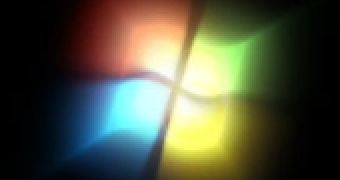Seven months after the general availability deadline of Windows 7, Microsoft is still selling seven licenses of the operating system every second. The successor of Windows Vista has long passed the 100-million-sold-copies mark, although this continues to be the only statistic related to sales that the Redmond company is sharing with the public. Speaking at the Bank of America Merrill Lynch U.S. Technology Conference, Tami Reller, corporate vice president and chief financial officer for the Windows & Windows Live Division, applauded the fastest selling operating system in history for its market success thus far.
“There are three things to talk about with Windows 7 over these past seven months. The first is that the consumer excitement and satisfaction with Windows 7 has really exceeded our expectations, and remains quite high. During the first six months since launch, we hit over 100 million licenses sold, which is well over two times the run rate of past OSes, which makes it the fastest selling in history. We're very pleased with that,” Reller stated.
A critical aspect of Windows 7’s success is the high consumer-satisfaction scores that the platform is catalyzing. According to the American Customer Satisfaction Index survey from May 2010, Microsoft satisfaction rose to a new high after Windows 7 was launched in 2009. It appears that Windows 7 is directly responsible for the overall consumer-satisfaction score of the Redmond company.
“I would say, even more important, is the fact that customer satisfaction with the product has been exceptionally high. It's the highest of any of our past OSes. And, in fact, with external benchmarks running at about 94 percent satisfaction, so quite high on that side as well,” Reller explained.
Obviously, just as it was the case with its predecessors, Windows 7’s success is intimately connected with that of the PC industry. After all, no less than 80% of the Windows division’s revenue comes from pre-installed copies of the OS on new original equipment manufacturer (OEM) computers. In this regard, the growth of the PC industry will generate growth for Windows.
“I would say that the PC market is incredibly vibrant - broad PC market [is] diverse and vibrant. If you look at some of the projections from Gartner [they are] showing that the mobile PC space, so the combination of notebooks and netbooks, [will grow] 43 percent in calendar '10. So, it's an incredible growth. For the first quarter of the calendar year, Gartner is showing 27 percent [for the total PC market]. We had talked about 25 to 27 percent growth in our last call. So, just some incredible growth,” Reller added.
A key sign that Windows 7 is in a different league than Vista is related to adoption by enterprise customers. While corporations are notoriously slow when it comes down to migrating to a new Windows OS, statistics already indicate that the businesses are warming up to Windows 7.
“And, indeed, we did signal in Q3 that we had started to see some real signs of momentum around enterprises deploying Windows 7. Specifically, what we're hearing from the conversations that we're having with customers, and the data that we actually have gathered is about 40 percent of enterprises are in either evaluation or pilot of Windows 7. And if you add in all levels of evaluation going on, you get up to about three-quarters of enterprise customers that are active with Windows 7,” Reller noted.

 14 DAY TRIAL //
14 DAY TRIAL //